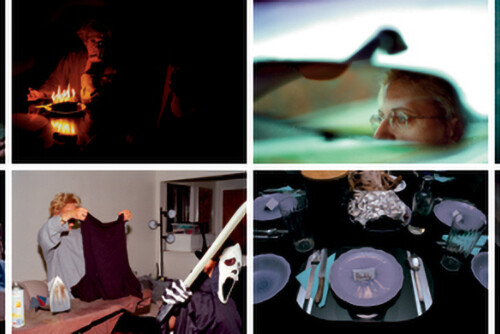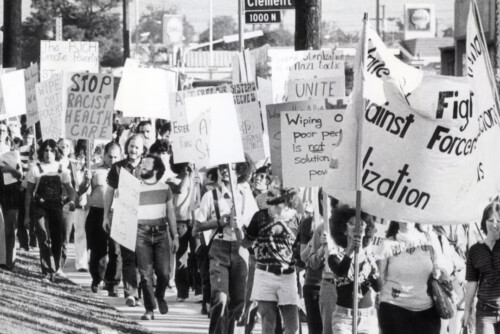The Empirical Basis for the Center’s Work
The Center has served more than 25,000 families over the past 21 years. Our practice experience is consistent with the findings of most empirical research on these children.
Children of prisoners are typically born to parents with histories of traumatic experiences in childhood, as well as limited education and employment histories, substance abuse and dependency, and mental health problems. 1 As a group, children of incarcerated parents are exposed to more developmental insults than other children:
- In the prenatal period, children of women prisoners may experience high levels of stress and may be exposed to drugs/alcohol. 2
- Throughout infancy and childhood, children of incarcerated parents endure multiple parent-child separations, face repeated disruptions in care and multiple changes of caregiver, and typically live apart from at least some siblings. 3
- Children of incarcerated parents are more likely than other children to be insecurely attached to their parents and caregivers, and they often demonstrate the consequences of insecure attachment, including difficulties in family and peer relationships. 4
- The families of prisoners’ children are often unable to provide adequate emotional and material support for child development, and are typically unable to protect children. As a result, children of prisoners’ have typically had multiple traumatic experiences. 5
- B. Bloom and S. Covington, “The Gendered Mental Health Needs of Women Offenders,” Paper Presented at the Annual Meeting of the American Society Of Criminology, Atlanta Marriott Marquis, Atlanta, Georgia, 2003; L.E. Glaze and L.M. Maruschak, “Parents In Prison and Their Minor Children,” Publication NCJ222984, Washington, D.C.: Bureau of Justice Statistics, 2008; T.E. Hanlon, R.J. Blatchley, T. Bennett-Sears, K.E. O’Grady, M. Rose, and J. Callaman, “Vulnerability of Children of Incarcerated Addict Mothers: Implications for Preventive Intervention,” Children and Youth Services Review 27.1 (2005): 67-84; C. Mumola, “Incarcerated Parents and Their Children,” Publication NCJ182335, Washington, D.C.: Bureau of Justice Statistics, 2000; S.D. Phillips, A. Erkanli, G.P. Keeler, E.J. Costello, A. Angold, “Disentangling the Risks: Parental Criminal Justice Involvement and Children’s Exposure to Family Risks,” Criminology and Public Policy 5.4 (2006): 677-702.[↑]
- C.C. Egley, D.E. Miller, J.I. Granatos, and C.I. Fogel, “Outcome of Pregnancy During Imprisonment,” Journal of Reproductive Medicine 37.2 (1992):131-134; D. Johnston, Children of Criminal Offenders (Pasadena: The Center for Children of Incarcerated Parents, 1992); C. McCall and N. Shaw, Pregnancy In Prison: A Needs Assessment Of Prenatal Outcomes In Three California Penal Institutions (Sacramento, CA: Department of Health Services, Maternal and Child Health Branch, 1985); B. Shelton, F. Armstrong, and S.E. Cochran, “Childbearing While Incarcerated,” American Journal of Maternal Child Nursing 8.23 (1983); J. Wismont, “The Lived Pregnancy Experience of Women in Prison,” Journal of Midwifery and Women’s Health, 45.4 (2000): 202-300.[↑]
- P.J. Baunach, “Mother from Behind Prison Walls,” Presented at the Annual Meeting of the American Society of Criminology: Philadelphia, PA, November 1979; D. Johnston (1991); D. Johnston (1992); L.A. Koban, “Parents in Prison: A Comparative Analysis of the Effects of Incarceration on the Families of Men and Women,” Research in Law, Deviance and Social Control 5 (1983): 171-183; B.G. McGowan and K. Blumenthal, Why Punish the Children? (Hackensack, NJ: National Council on Crime & Delinquency, 1978); A. Stanton, When Mothers Go To Jail (Lexington, MA: Lexington Books, 1980); S. Zalba, Women Prisoners and Their Families (Sacramento, CA: California Department of Corrections and California Department of Social Welfare, 1964).[↑]
- D. Johnston, “Effects of Parental Incarceration,” in K. Gabel and D. Johnston, eds., Children of Incarcerated Parents (New York: Lexington Books, 1995); J. Poehlmann, “Representations of Attachment Relationships in Children of Incarcerated Mothers,” Child Development 76 (2005): 679-696.[↑]
- A. Adalist-Estrin, “Parenting… from Behind Bars,” Family Resource Coalition Report 5.1 (1986): 12-13; J.E. Blackwell, “The Effects of Involuntary Separation on Selected Families of Men Committed to Prison from Spokane,” Unpublished Dissertation, State College of Washington, 1959; B. Bloom and D. Steinhart, Why Punish the Children? A Reappraisal of the Children of Incarcerated Mothers in America (San Francisco: National Council on Crime and Delinquency, 1993); E.I. Johnson and J. Waldfogel, “Children of Incarcerated Parents: Cumulative Risk and Children’s Living Arrangements,” Working Paper 306, Chicago: Joint Center for Poverty Research, 2002; D. Johnston (1992).[↑]



